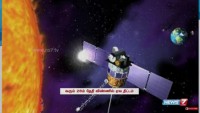China Builds Largest Telescope in the World
| Eana Maniebo | | Oct 12, 2015 07:57 AM EDT |
(Photo : FAST Official Website) The Five-hundred-meter Aperture Spherical Telescope (FAST).
China joins the race to build the largest optical instrument known to man. The Five-hundred-meter Aperture Spherical Telescope (FAST) is being built that will allow scientists to capture radio signals from space billions of light years away.
Like Us on Facebook
To gain perspective of the telescope's size, its massive dish is said to be 30 football fields long. A drone video released by the state-backed China Central Television Station showed all 4,600 triangular panels, each fixed with a cable for scientists to manipulate the positions of the panels at a 0.03 inch or 0.07 centimeter accuracy. Moreover, the telescope, which has a zenith angle of 40 degrees, will eliminate the need for complex feed systems as the active main reflector will reportedly correct for spherical aberration, or an optical problem that can affect resolution and clarity.
The 124 million pound (close to 190 million dollars) scientific investment was welcomed by the international science community. National Astronomical Observatories Chinese Academy of Sciences chief scientist Li Di said, "FAST will remain the best in the world in the next twenty to thirty years after it is completed. FAST can answer questions not only limited to astronomy but questions about humanity and nature. The scientific potential of this telescope is hard to predict."
Cost To Value
Price may not be a factor when it comes to funding scientific ventures to make life-altering discoveries. Aside from China and the US, Chile, Spain, Puerto Rico, Australia, and India had invested in extremely large and complex telescope observatories in the world.
The significance of studying the negative counterpart of normal matter has grown in recent years, thanks to the potential benefits it can provide. Emma Cox wrote on Thought Catalog that the properties of antimatter can help develop practical, real-world solutions, such as target-killing of cancer cells, reducing space travel costs, and developing preventive measures to protect communication systems.
Thunder Energies Corporation (OTCQB: TNRG) did not hesitate when it decided to initiate the production and sale of the Santilli Telescope, a proprietary telescope that was used in the detection of antimatter galaxies, antimatter asteroids, and antimatter cosmic rays from Vega region of the sky in late 2013.
Dr. Ruggero Maria Santilli, who made the ground-breaking discovery, saw evidence of the antimatter bodies using a refractive, concave lens telescope based from a new set of mathematics he also developed for the purpose of studying antimatter.
"I am particularly glad that Thunder Energies Corporation is making available to professional as well as amateur astronomers all over the world our new telescopes for the first known systematic search of antimatter galaxies following a number of scientific publications," Santilli said of the initiative.
However, several telescope observatories have seen themselves shelved before even making such groundbreaking discoveries. NASA had said that it was prepared to axe Stratospheric Observatory for Infrared Astronomy (SOFIA) telescope this year after it was decided that the funds used to operate the facility will go towards programs with "higher-priority," Universe Today reported.
The website said that to date, it had taken some impressive footage about the elusive M82 supernova. NASA said the facility requires 85 million dollars yearly on their end. German space agency DLR covers the other 25 percent of the annual total operating cost.
NASA chief financial officer Beth Robinson in a follow-up conference call said, "SOFIA does have a rather large operating cost compared to other missions, second only to Hubble [Space Telescope]," said NASA chief financial officer Beth Robinson in the second conference call. "There is a distinct trade in the operating mission universe about how many keep going and how much you free up (for new missions)."
Tagsworld's largest telescope, The Five-hundred-meter Aperture Spherical Telescope (FAST), China's largest telescope, China builds largest telescope in the world, space exploration, Antimatter, space technology, space technology development, Thunder Energies, Santilli telescope, Ruggero Santilli, hubble telescope
©2015 Chinatopix All rights reserved. Do not reproduce without permission
 Isolated Stars Can Be Weighed: New Method
Isolated Stars Can Be Weighed: New Method ISRO Will Launch Astronomy Satellite on Sep. 28
ISRO Will Launch Astronomy Satellite on Sep. 28 China's Space Program: China to Land on the Dark Side of the Moon
China's Space Program: China to Land on the Dark Side of the Moon Apocalypse News: NASA Denies Asteroid Hitting Earth In September
Apocalypse News: NASA Denies Asteroid Hitting Earth In September From the Big Bang to a Whimper: Scientists Confirm the Universe is Slowly Fading Away
From the Big Bang to a Whimper: Scientists Confirm the Universe is Slowly Fading Away
EDITOR'S PICKS
-

Did the Trump administration just announce plans for a trade war with ‘hostile’ China and Russia?
-

US Senate passes Taiwan travel bill slammed by China
-

As Yan Sihong’s family grieves, here are other Chinese students who went missing abroad. Some have never been found
-

Beijing blasts Western critics who ‘smear China’ with the term sharp power
-

China Envoy Seeks to Defuse Tensions With U.S. as a Trade War Brews
-

Singapore's Deputy PM Provides Bitcoin Vote of Confidence Amid China's Blanket Bans
-

China warns investors over risks in overseas virtual currency trading
-

Chinese government most trustworthy: survey
-

Kashima Antlers On Course For Back-To-Back Titles
MOST POPULAR
LATEST NEWS
Zhou Yongkang: China's Former Security Chief Sentenced to Life in Prison

China's former Chief of the Ministry of Public Security, Zhou Yongkang, has been given a life sentence after he was found guilty of abusing his office, bribery and deliberately ... Full Article
TRENDING STORY

China Pork Prices Expected to Stabilize As The Supplies Recover

Elephone P9000 Smartphone is now on Sale on Amazon India

There's a Big Chance Cliffhangers Won't Still Be Resolved When Grey's Anatomy Season 13 Returns

Supreme Court Ruled on Samsung vs Apple Dispute for Patent Infringement

Microsoft Surface Pro 5 Rumors and Release Date: What is the Latest?










